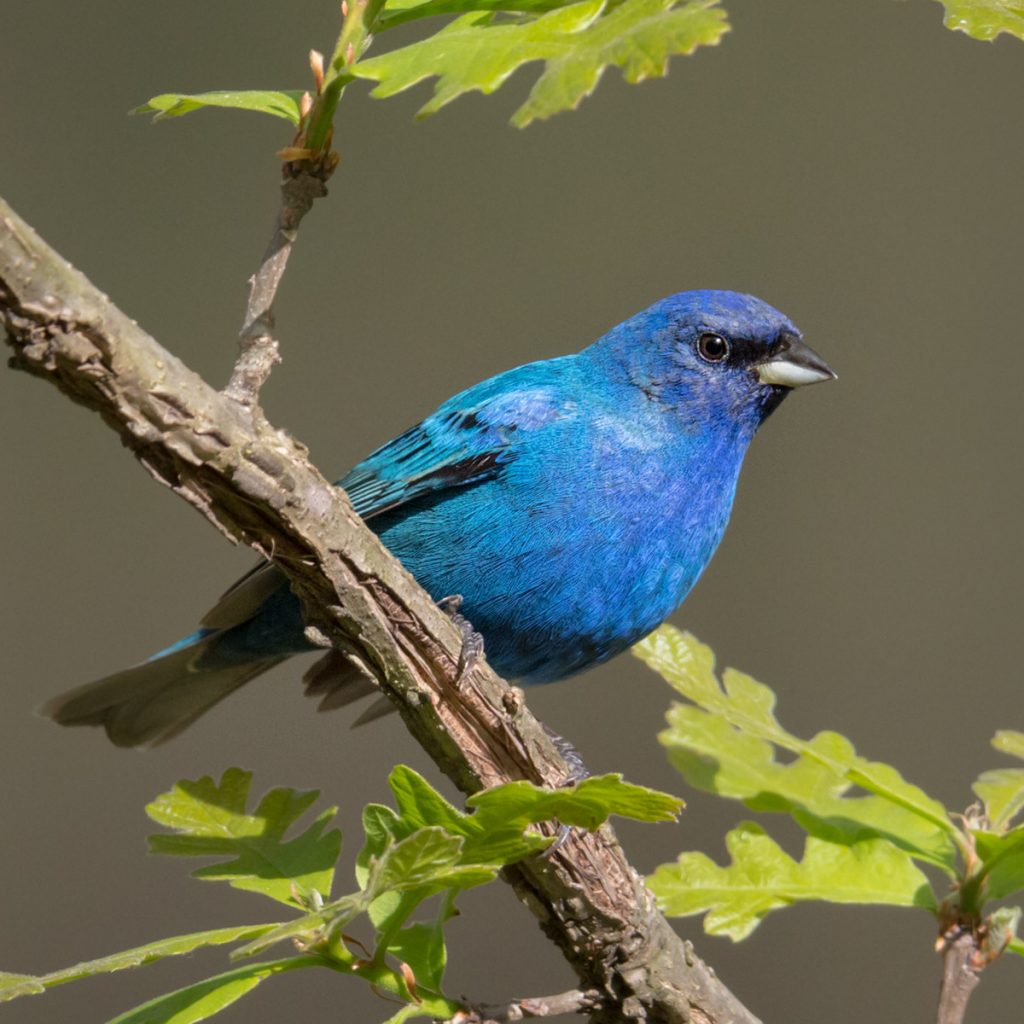
Kiawah - uncommon spring and fall, occasional summer (breeds). VOICE: Their song is a high, sharp, metallic warble with repeated phrases (" fire fire where where here here"), much more musical than that of the Painted Bunting. They forage alone in summer but form flocks in winter. They forage at all levels from the ground into shrubs and trees. This may be one reason why Painted Buntings are declining inland from the coast.ĭIET: Indigo Buntings feed on insects, seeds and grain, fruit and berries. Indigo and Painted Buntings interact aggressively during the breeding season, often to the detriment of the Painted Bunting. The female may have some help from the male tending young but most do little feeding unless the female starts a second brood. Young are altricial and fledge after 9-12 days. She lays 3-4 (1-2) eggs which she incubates for 12-13 (11-14) days. It is located in a tangle or tree and is woven using grass, leaves, bark, Spanish moss, shed snakeskin, and weeds and is lined with grass, feathers, hair, and other fine materials. The female selects the nest site and builds. In winter, indigos range from southern Florida and central Mexico to Panama, the Greater Antilles, and the Bahamas.īREEDING: Monogamous. RANGE: Indigos breed from northern Florida to central Maine, west through the Great Lakes area to the eastern Dakotas, then south through southeastern Colorado, Arizona, northern New Mexico, and east to the Gulf coast from eastern Texas to Florida. Their bill is much less prominent than that of the Blue Grosbeak. They show some blue in the tail when they fly. Females are brownish with some fine streaks on the breast. Non-breeding males show some blue feathers and appear mottled. Indigo Buntings are similar in size to Painted Buntings but the adult males are all bright blue without wing bars. Males use higher perches for singing and display.īRUSHY EDGES, REGENERATING CLEARINGS, SECOND GROWTH, OPEN FIELDS They live in low brush and forage low or on the ground. The group includes residents and irruptive species which tend to appear in our area only in severe winters.Īmerican Buntings ( Passerina) ( Wiki) have brightly colored adult males. They have a large conical bill used for cracking seeds and males may be brightly colored. Nine-primaried Oscines include New World warblers, icterids (New World blackbirds), emberizines (buntings), tanagers, cardinalines (cardinals), and fringillines (finches).Ĭardinalines are small to medium-sized nine-primaried oscines. Passeroids include the Nine-primaried Oscines, pipits, Old World sparrows, and weavers. Oscines are passerines with complex syringeal musculature used to produce varied vocalizations. Young hatch blind with little or no down and spend 10-15 days or so in the nest - development is rapid and parents provide care beyond fledging. All passerines scratch by bringing the foot over the wing.


They have a perching foot with three toes directed forward and the one backward with locking tendons to facilitate perching when their tendons are flexed. Passerines are generally smaller than non-passerines. Parvorder Passerida (Superfamily Passeroidea)įamily Cardinalidae - Cardinals, Grosbeaks, Buntings


 0 kommentar(er)
0 kommentar(er)
